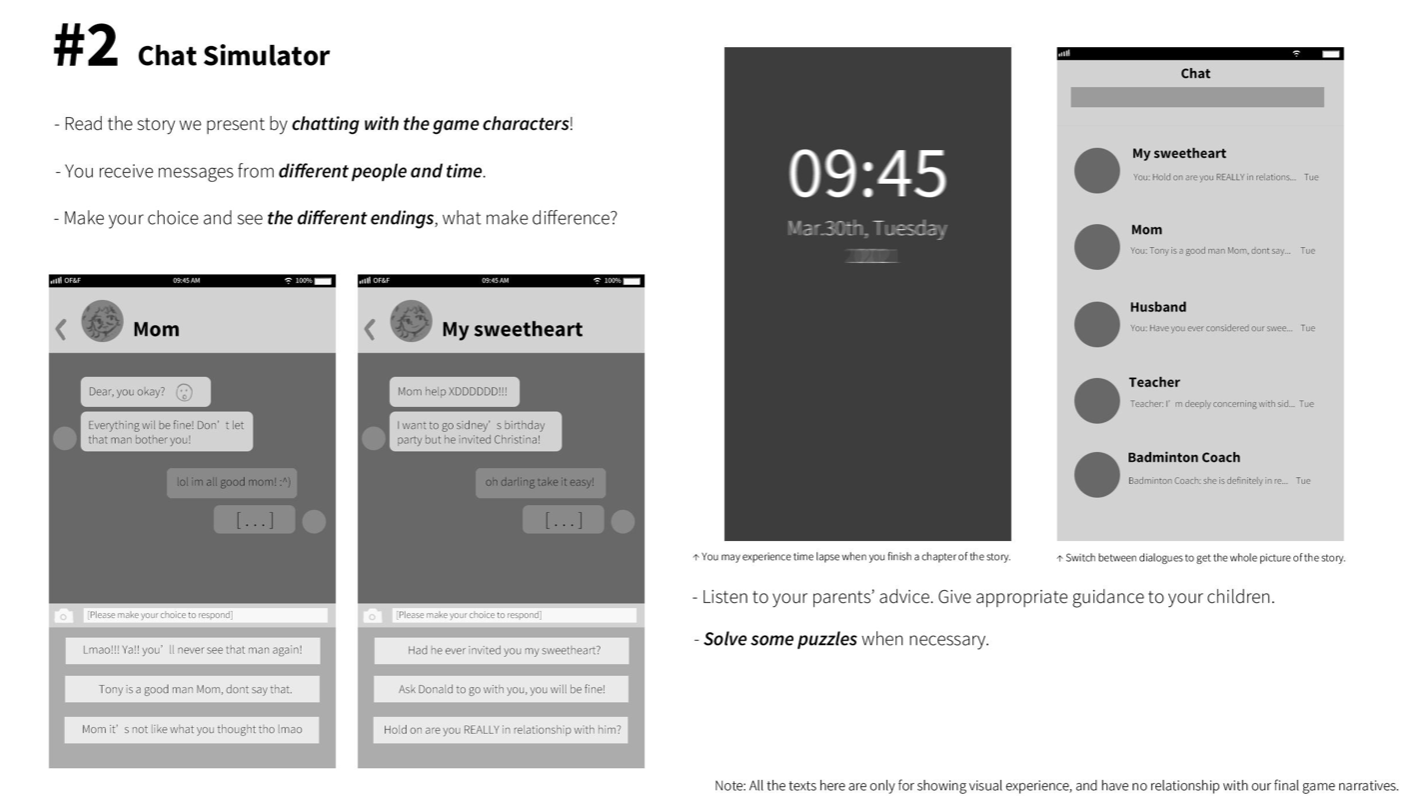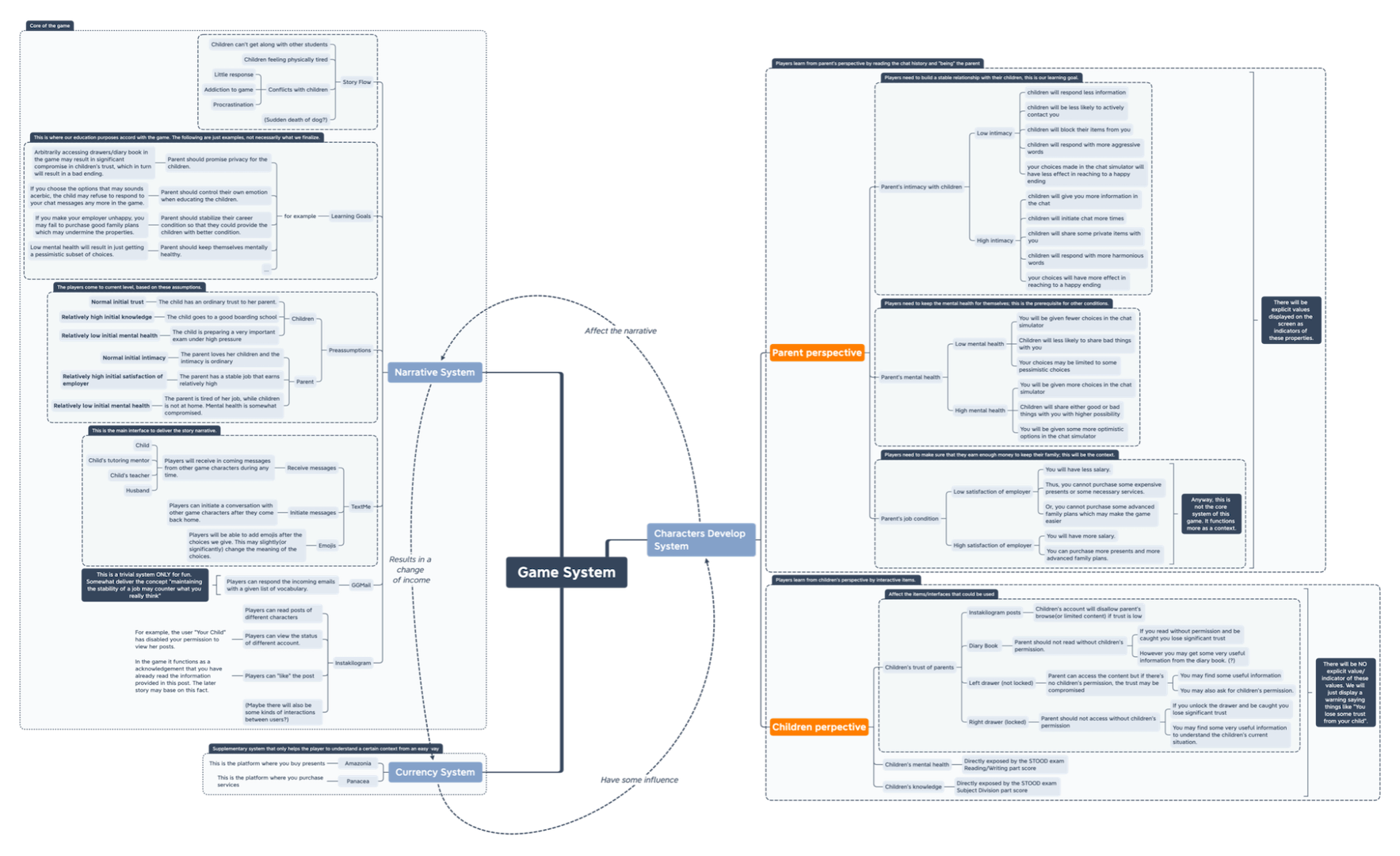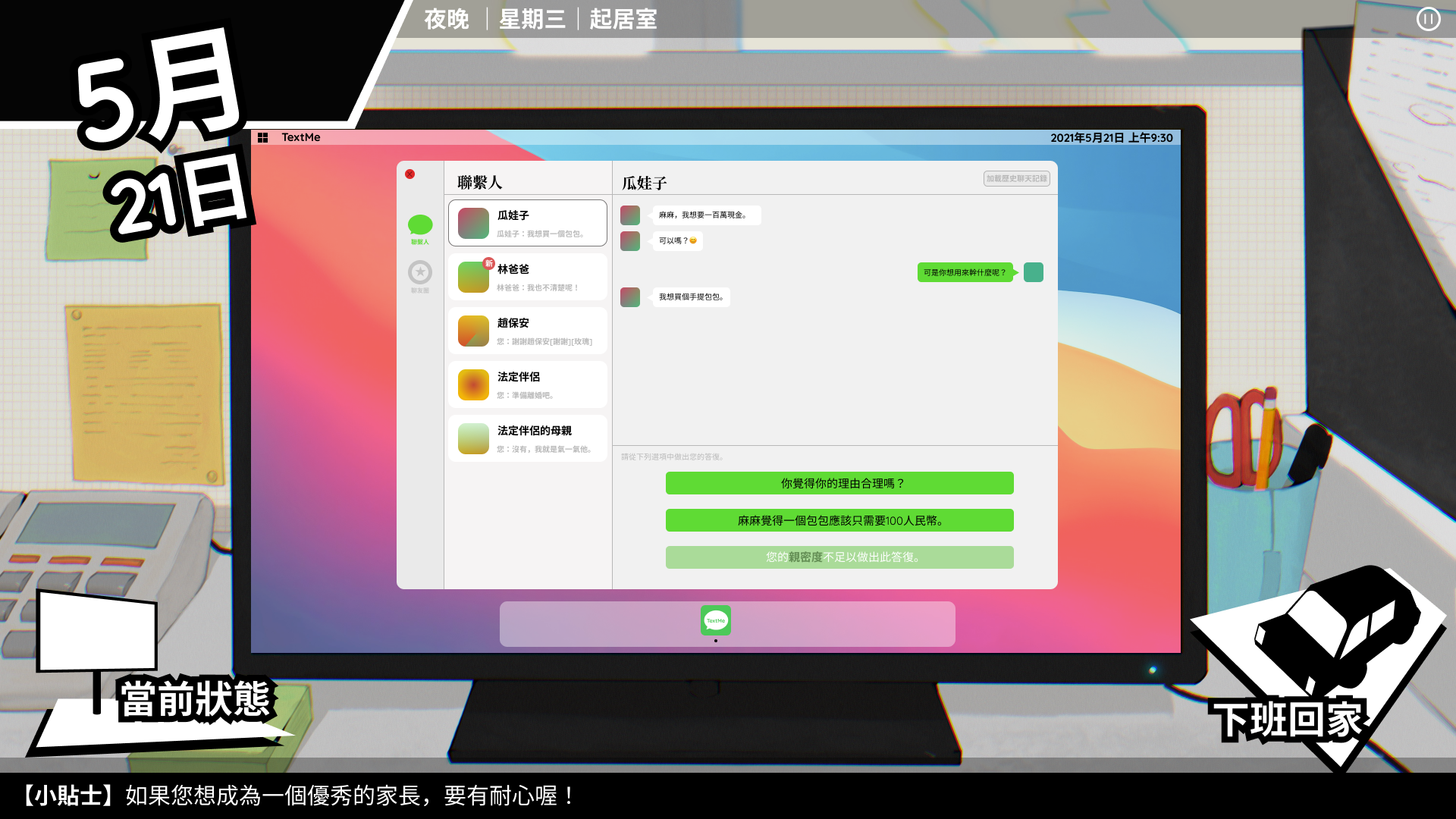In my junior year spring (2021), I took Design Educational Games (05-418/818 DEG) with Dr. Erik Harpstead.
In DEG, we individually write critique blogs of educational games using the EDGE framework, conduct Cognitive Task Analysis (CTA) on geometry problems, and brainstorm, prototype, and playtest on board games that target at teaching historical thinking skills. You can find detailed information about these individual assignments in my medium posts.
DEG is a very fun and rewarding experience, I learned many game design & research methods and developed an interest in game as the educational technology that has the potential of incorporating learning science principles, which eventually led to my honor thesis. Additionally, I’ve got to apply the methods and models we’ve learned in class in a game design project.
Brainstorming using Miro |
Initial game idea: Chat simulator @Tony Tao |
|---|---|
 |
 |
The final project of DEG is to design an educational game in a team; after brainstorming, our team decided to adopt my idea and design a parent education game. After discussing the 3 game ideas that my teammate Tony Tao offered, we decided to implement a chat game on Unity to teach Chinese parents How to Become a Better Parent (if you use a 64-bit Windows system, you can download our game here, or visit us on our booth at DEG’s gather.town showcase).
In this project, I researched & set the learning objectives (here’s a list of parenting dos and don’ts that we incorporated into the game), wrote the interactive narrative for the chat game, conducted playtesting sessions, and designed the evaluation protocol for this game’s educational value on our target audience. My amazing teammate Tony created all the beautiful UI & game system, and he also implemented the whole game in Unity, which is an insane amount of work. For more information on game implementation, please refer to Tony’s website.
DEG Showcase Booth |
Game System @Tony Tao |
TextMe Interface @Tony Tao |
|---|---|---|
 |
 |
 |
Within 6 weeks, we started from scratch and ended up with an educational game in 2 languages with 3 different endings and a total of 32 possibilities converged into mainly 4 storylines. Our professor said, “it’s probably the most impressive digital game that’s ever been made for this class.”
If you’re interested in learning more about the game design process, here’s our 30 pages final writeup that delineated our learning goals, experience goals, ideation & prototyping, and playtesting & evaluation process.